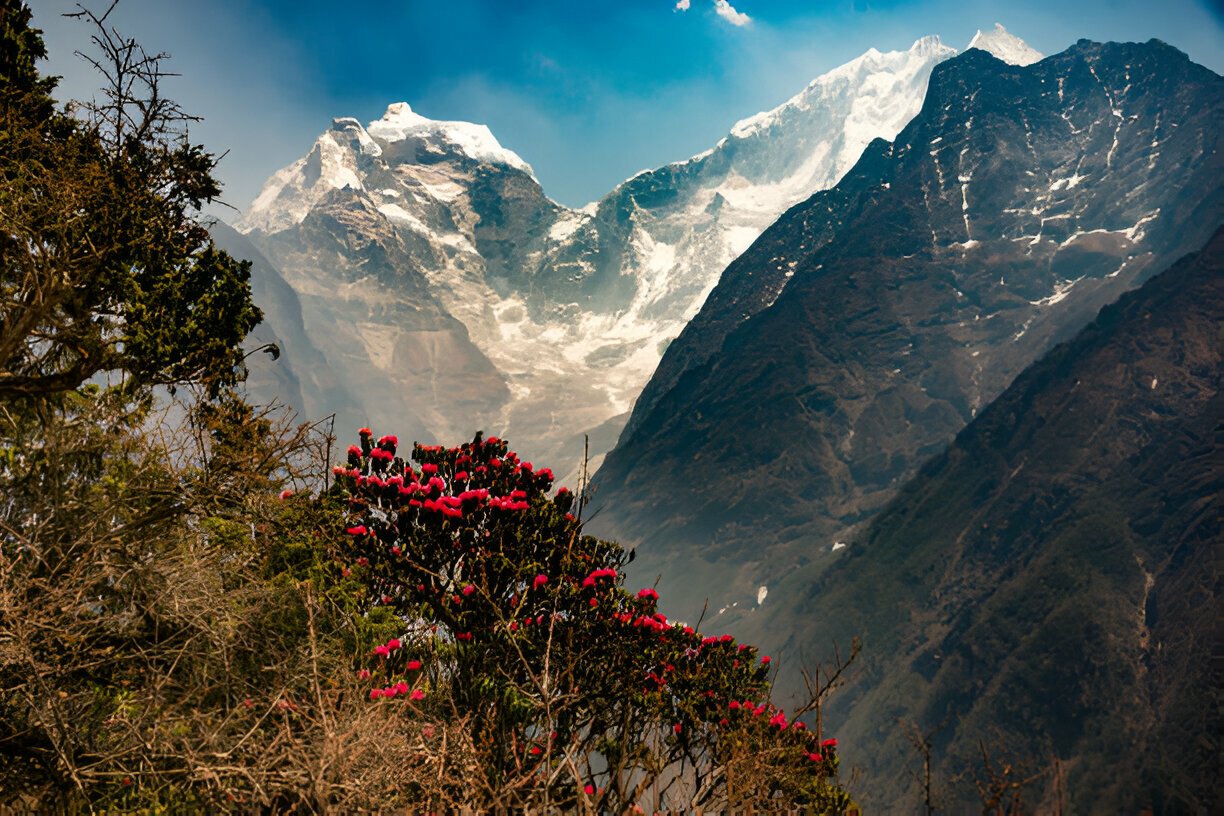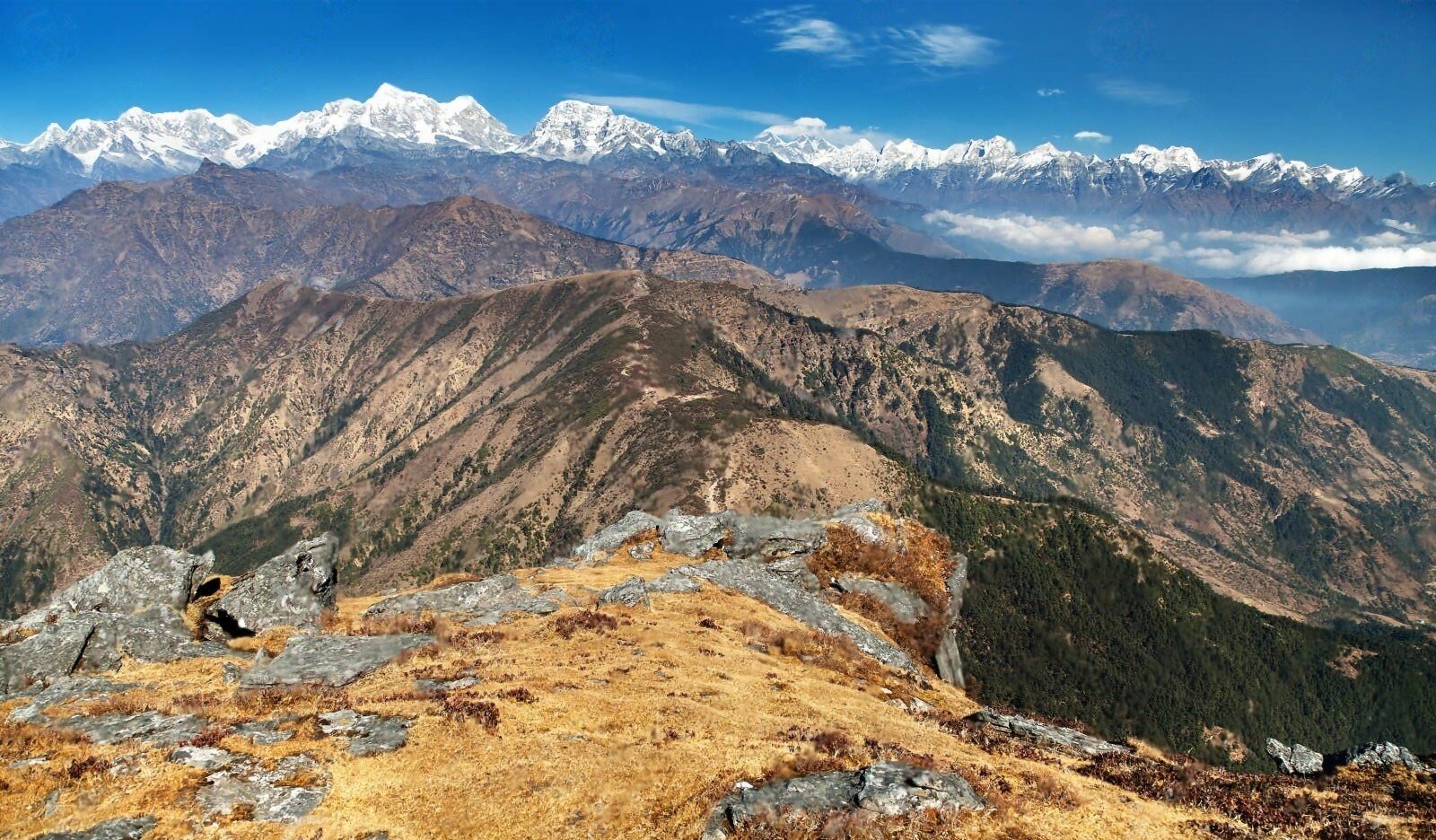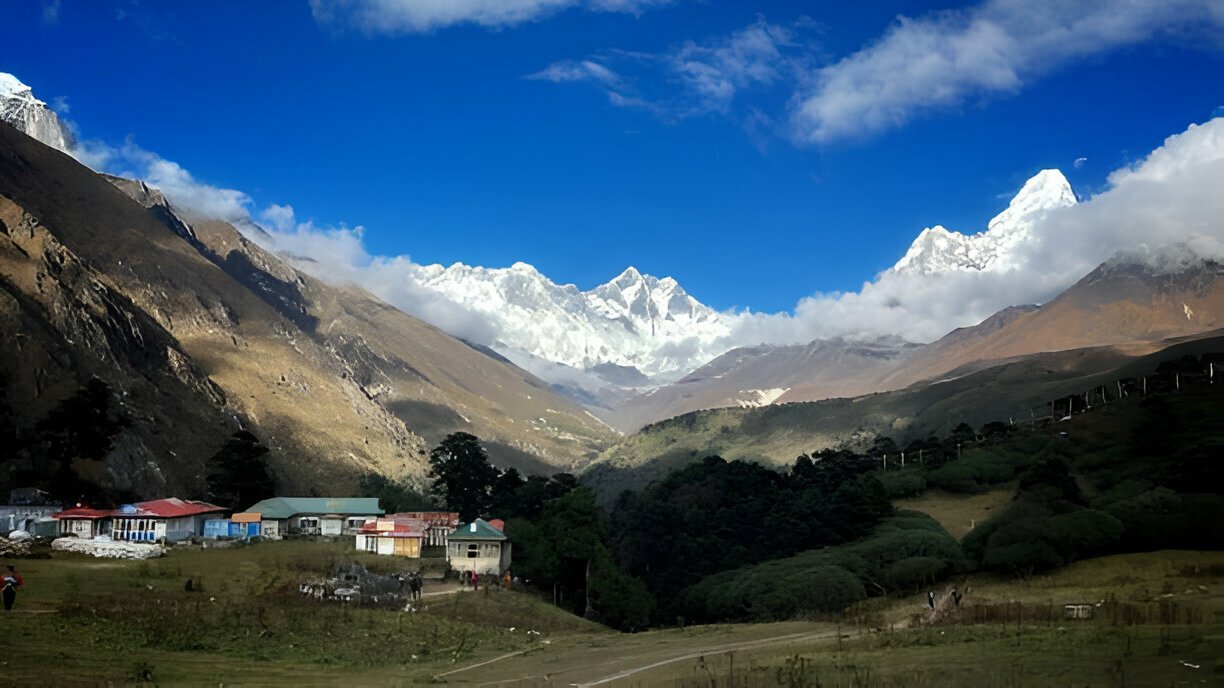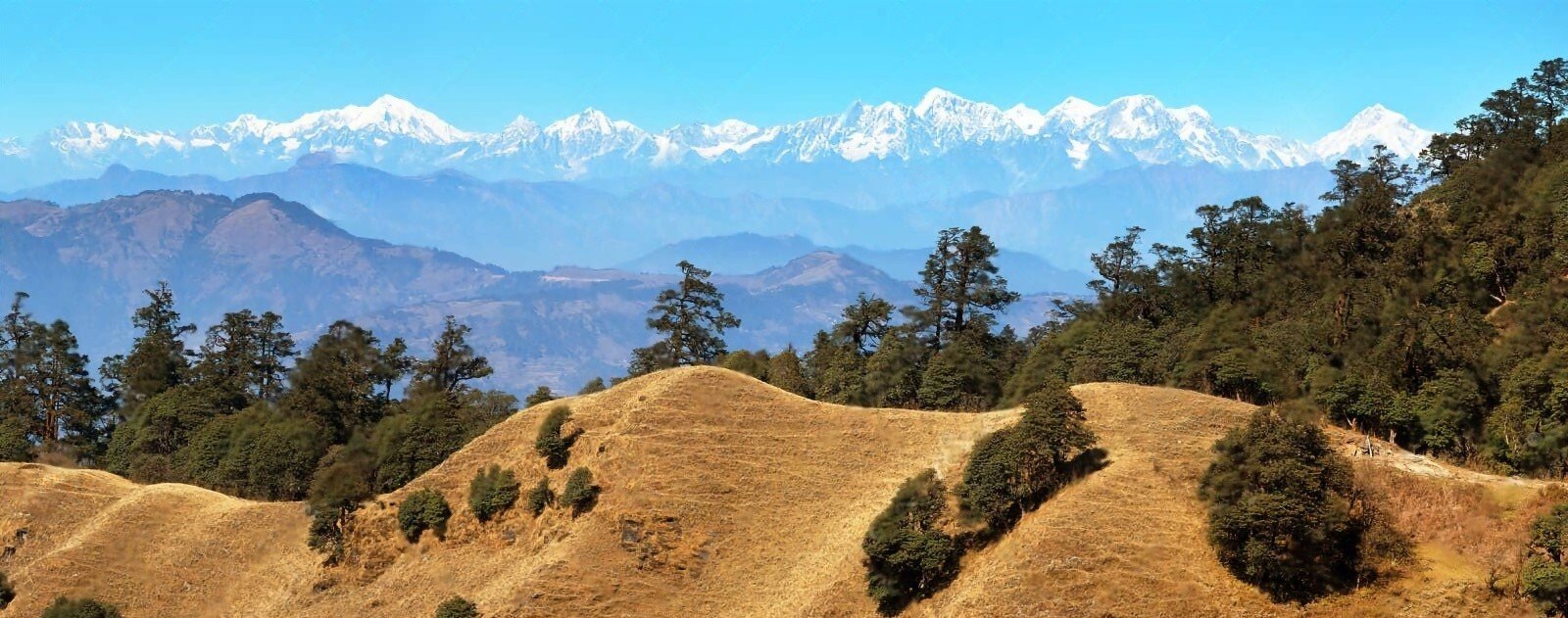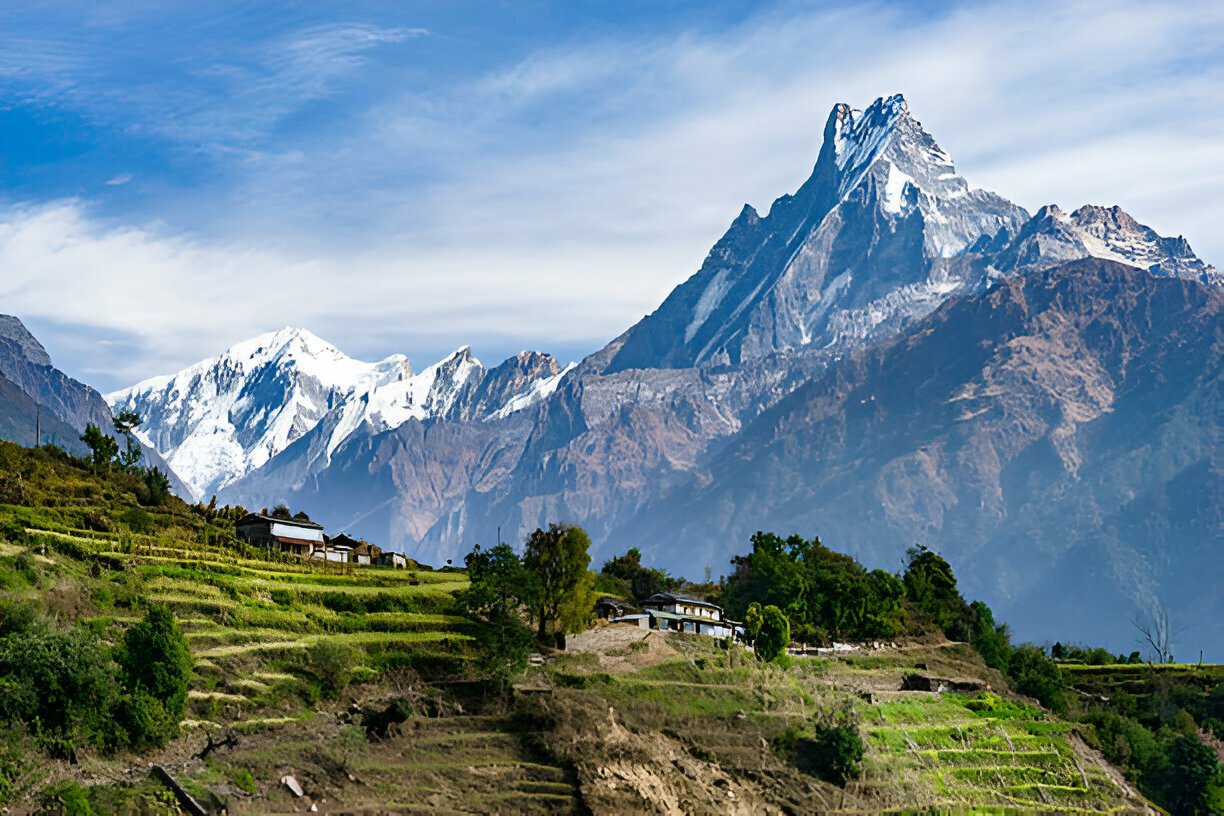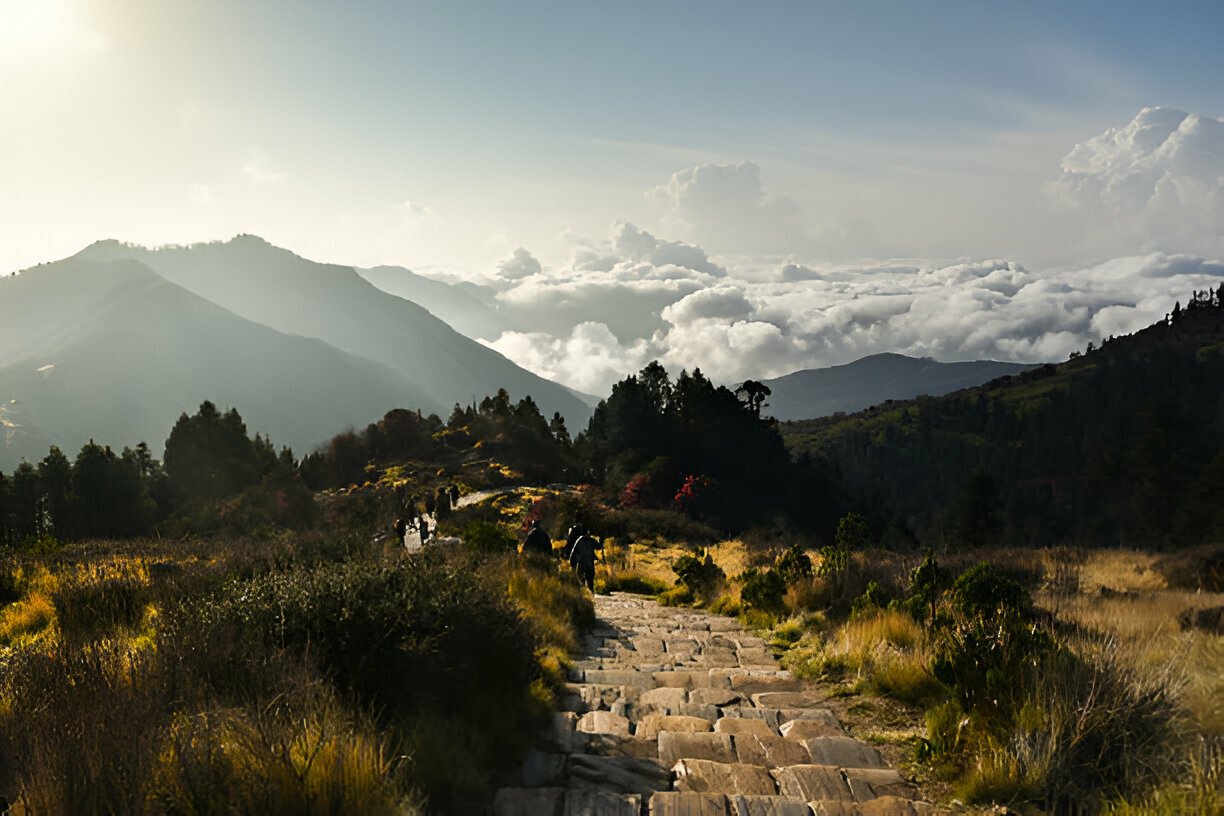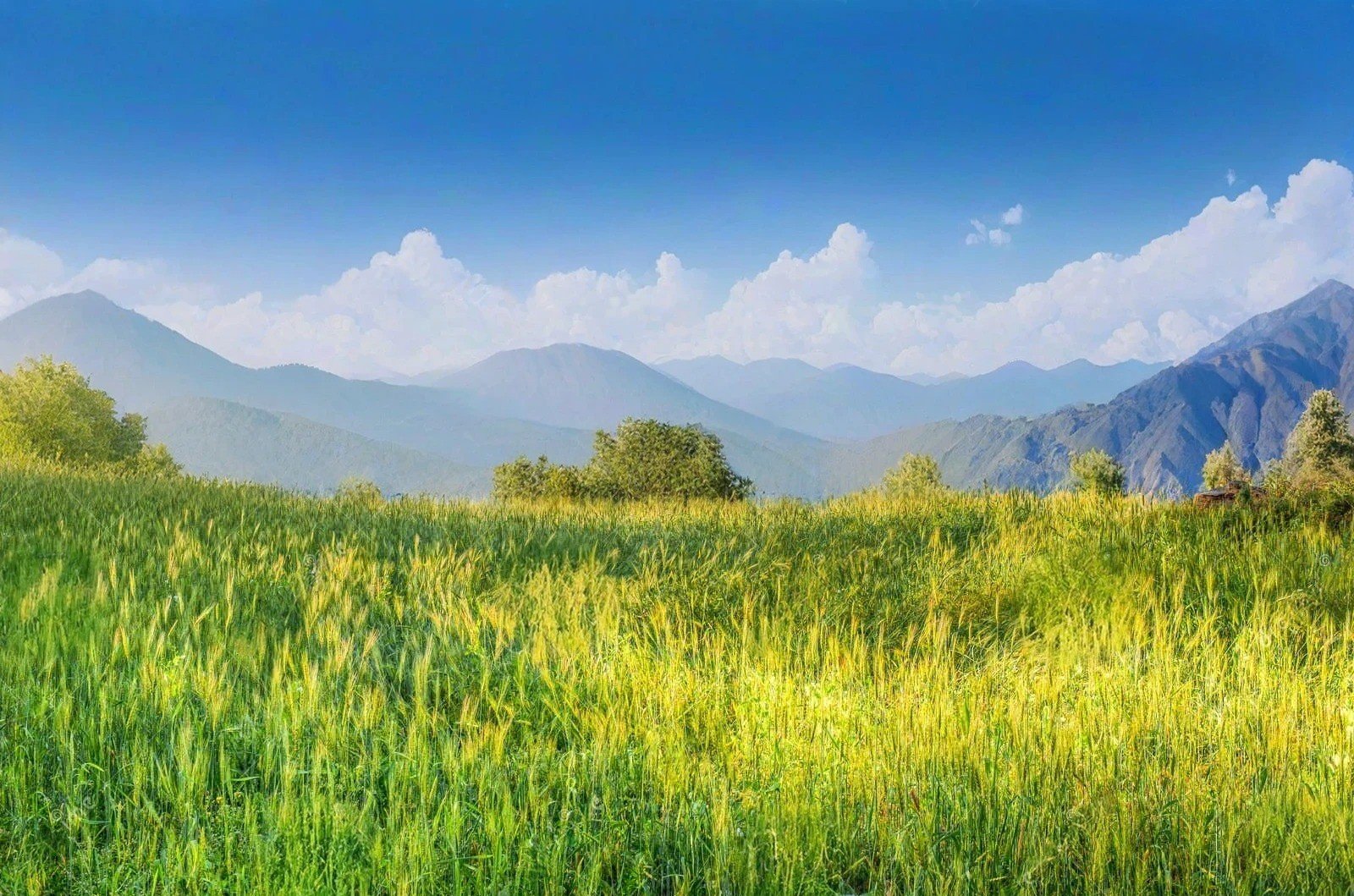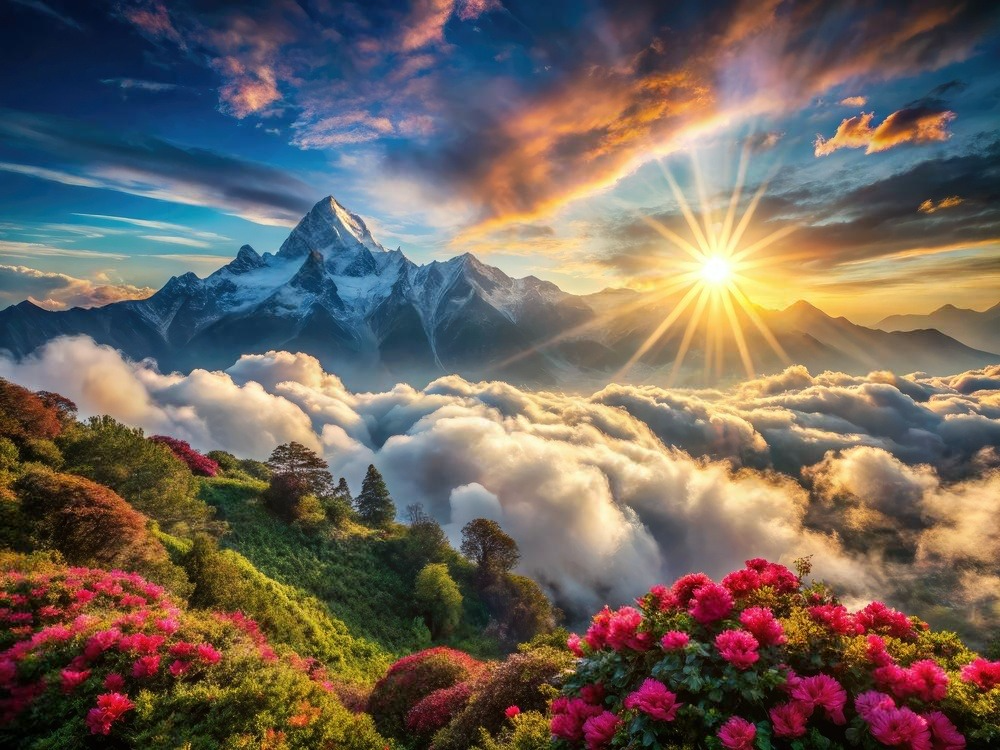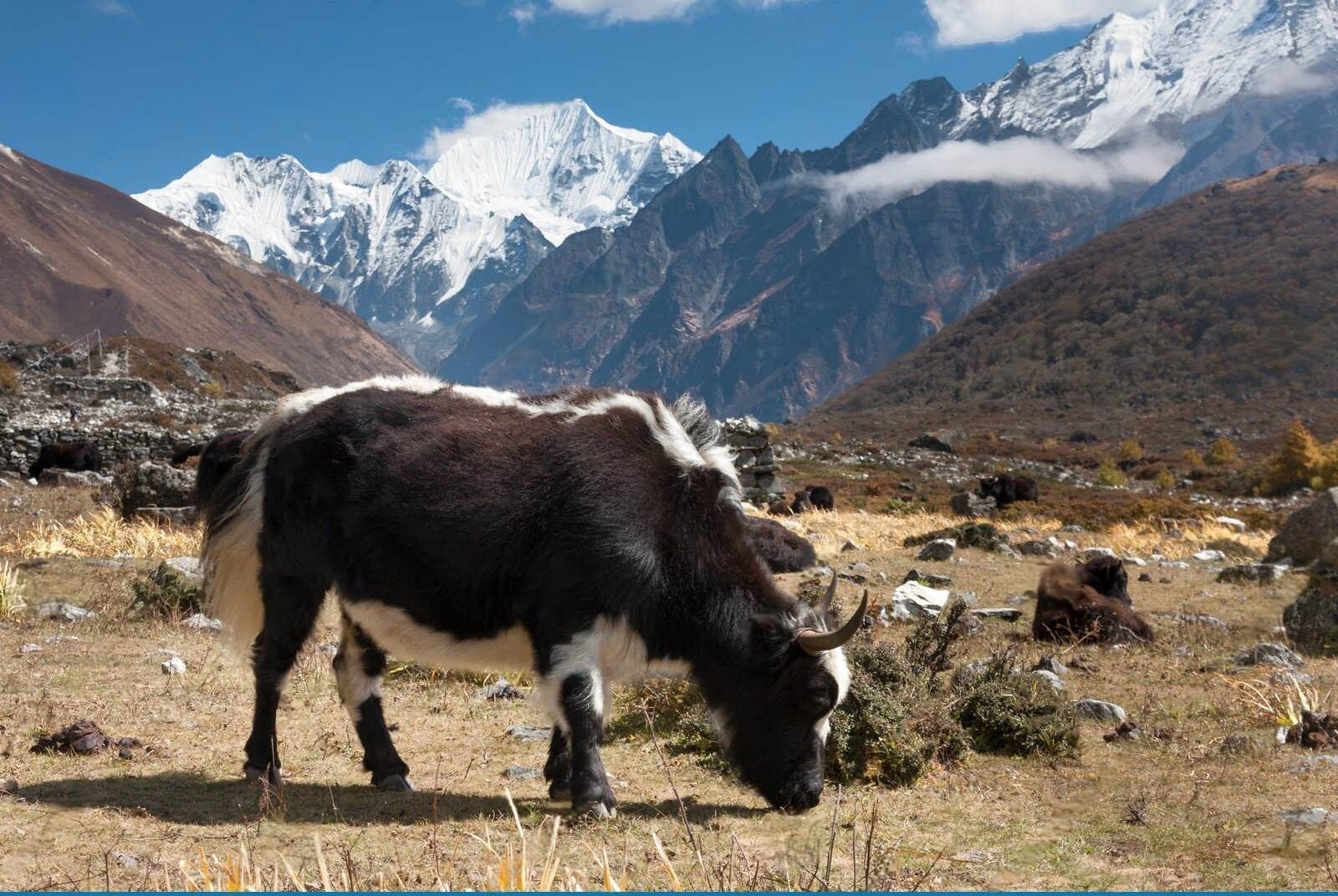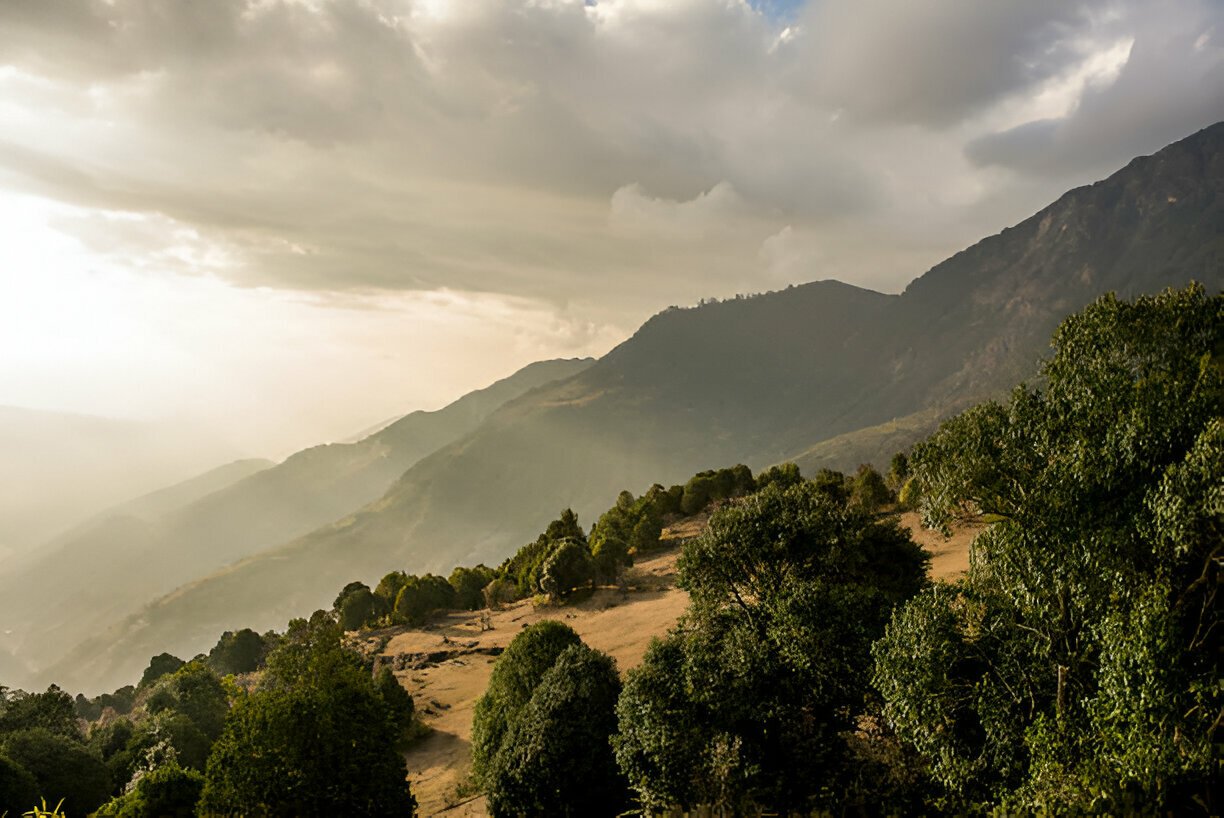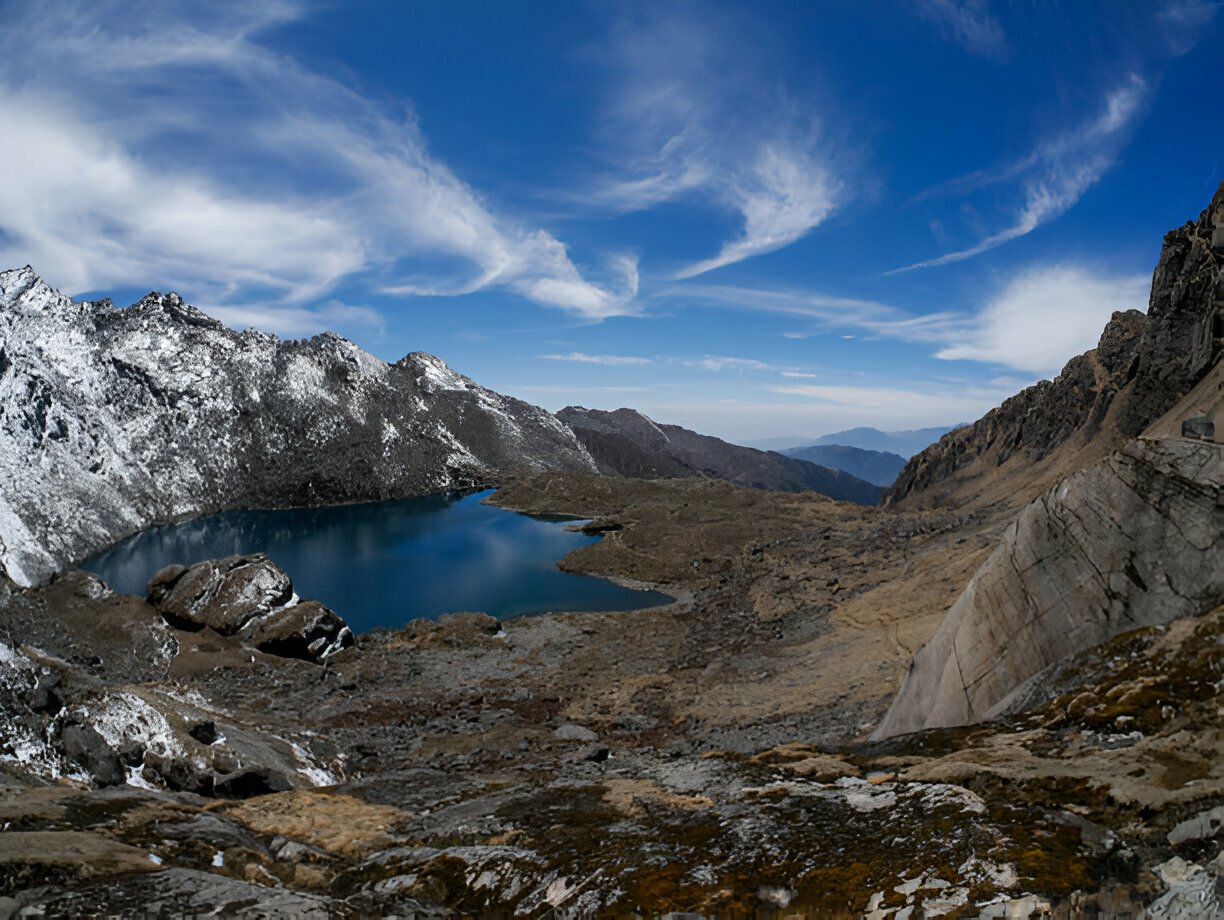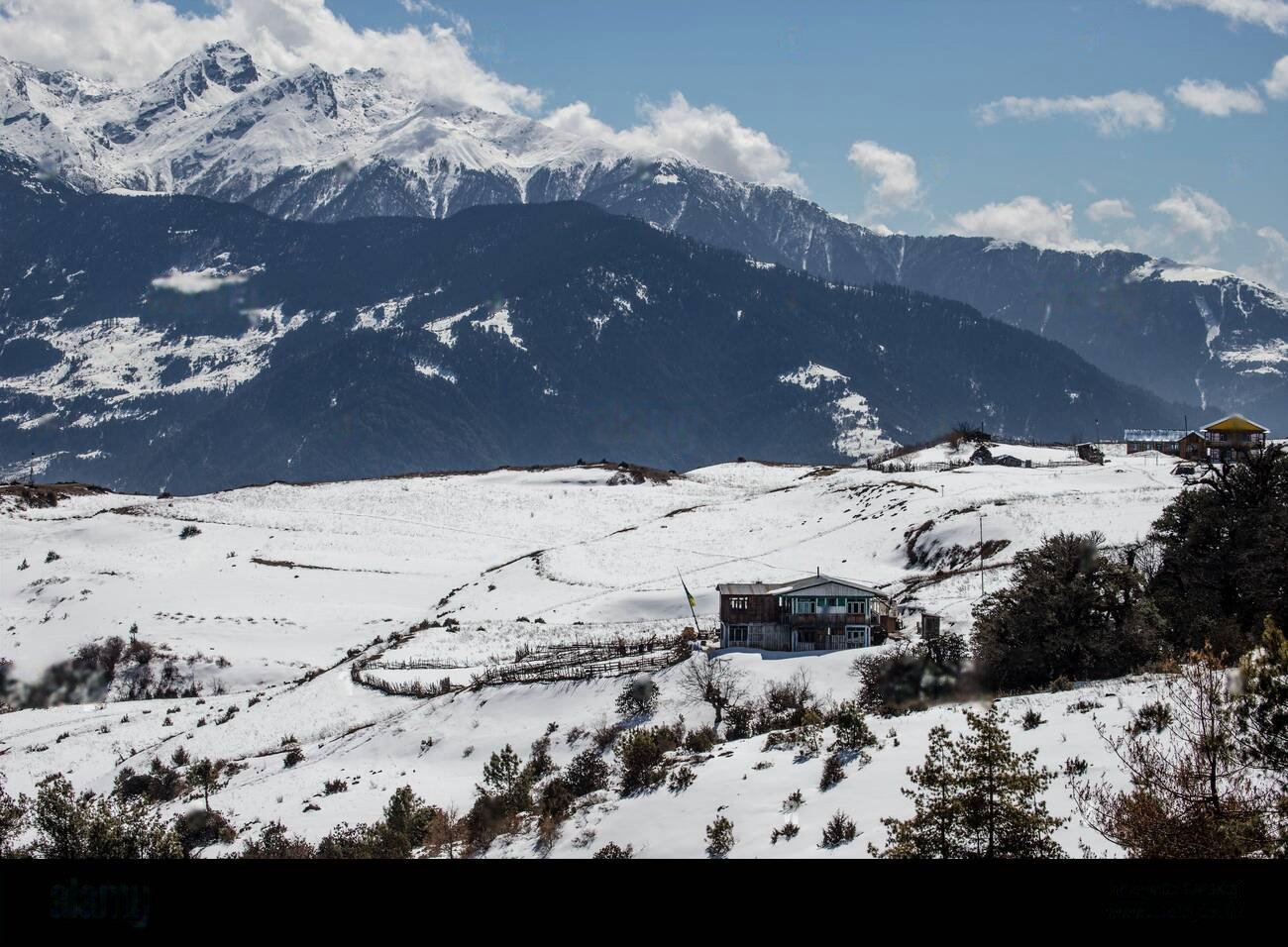 About this Trip
About this Trip
The Panchase Trek represents a perfectly proportioned Himalayan adventure, offering a remarkable concentration of Nepal's natural and cultural highlights within a brief, accessible journey. What makes this trek exceptional is its ability to deliver authentic rural experiences, ecological diversity, and magnificent mountain vistas within a timeframe and difficulty level that works for almost any reasonably active traveler.
The trek follows a thoughtfully designed route that begins from the tourist hub of Pokhara but quickly transitions into a world that feels distant from modern development. Rising gradually through changing ecological zones, the path creates a journey of continuous discovery, with each segment revealing new perspectives, environments, and cultural encounters. The relatively modest distances between villages and the manageable elevation gain create a comfortable rhythm that allows ample time for both walking and meaningful engagement with surroundings.
The cultural dimension of this trek holds special appeal for those seeking authentic encounters away from more commercialized routes. Villages along the way maintain traditional agricultural practices, religious observations, and architectural styles largely unaffected by tourism. Homes feature distinctive local designs using available natural materials, and daily life continues according to seasonal farming rhythms rather than visitor expectations. When trekkers approach, reactions typically reflect genuine curiosity and hospitality rather than commercial interest, creating opportunities for meaningful cultural exchange.
Ecologically, the trek traverses an astonishingly diverse environment within a compact area. Beginning near subtropical Pokhara, the trail climbs through broadleaf forests into rhododendron and oak woodlands before reaching higher alpine zones near Panchase peak. This compressed ecological gradient supports remarkable biodiversity, with hundreds of plant species, abundant bird life, and occasional wildlife sightings. For botanists and nature enthusiasts, the area represents a treasure trove of observation opportunities, particularly during spring when wildflowers and rhododendrons create natural gardens throughout the forests.
Perhaps most distinctively, the Panchase trek delivers a profound sense of accomplishment and connection to the greater Himalayan landscape despite its relatively modest altitude. The summit of Panchase Hill, though far lower than the trekking passes on more famous routes, offers a spectacular panorama that encompasses some of the world's highest mountains alongside the pastoral beauty of middle hill villages and the shimmering waters of Phewa Lake. This visual connection to both the heights of the Himalayas and the cultural landscapes below creates a uniquely satisfying perspective that many longer, higher treks cannot match.
The Panchase Trek represents a perfectly proportioned Himalayan adventure, offering a remarkable concentration of Nepal's natural and cultural highlights within a brief, accessible journey. What makes this trek exceptional is its ability to deliver authentic rural experiences, ecological diversity, and magnificent mountain vistas within a timeframe and difficulty level that works for almost any reasonably active traveler.
The trek follows a thoughtfully designed route that begins from the tourist hub of Pokhara but quickly transitions into a world that feels distant from modern development. Rising gradually through changing ecological zones, the path creates a journey of continuous discovery, with each segment revealing new perspectives, environments, and cultural encounters. The relatively modest distances between villages and the manageable elevation gain create a comfortable rhythm that allows ample time for both walking and meaningful engagement with surroundings.
The cultural dimension of this trek holds special appeal for those seeking authentic encounters away from more commercialized routes. Villages along the way maintain traditional agricultural practices, religious observations, and architectural styles largely unaffected by tourism. Homes feature distinctive local designs using available natural materials, and daily life continues according to seasonal farming rhythms rather than visitor expectations. When trekkers approach, reactions typically reflect genuine curiosity and hospitality rather than commercial interest, creating opportunities for meaningful cultural exchange.
Ecologically, the trek traverses an astonishingly diverse environment within a compact area. Beginning near subtropical Pokhara, the trail climbs through broadleaf forests into rhododendron and oak woodlands before reaching higher alpine zones near Panchase peak. This compressed ecological gradient supports remarkable biodiversity, with hundreds of plant species, abundant bird life, and occasional wildlife sightings. For botanists and nature enthusiasts, the area represents a treasure trove of observation opportunities, particularly during spring when wildflowers and rhododendrons create natural gardens throughout the forests.
Perhaps most distinctively, the Panchase trek delivers a profound sense of accomplishment and connection to the greater Himalayan landscape despite its relatively modest altitude. The summit of Panchase Hill, though far lower than the trekking passes on more famous routes, offers a spectacular panorama that encompasses some of the world's highest mountains alongside the pastoral beauty of middle hill villages and the shimmering waters of Phewa Lake. This visual connection to both the heights of the Himalayas and the cultural landscapes below creates a uniquely satisfying perspective that many longer, higher treks cannot match.
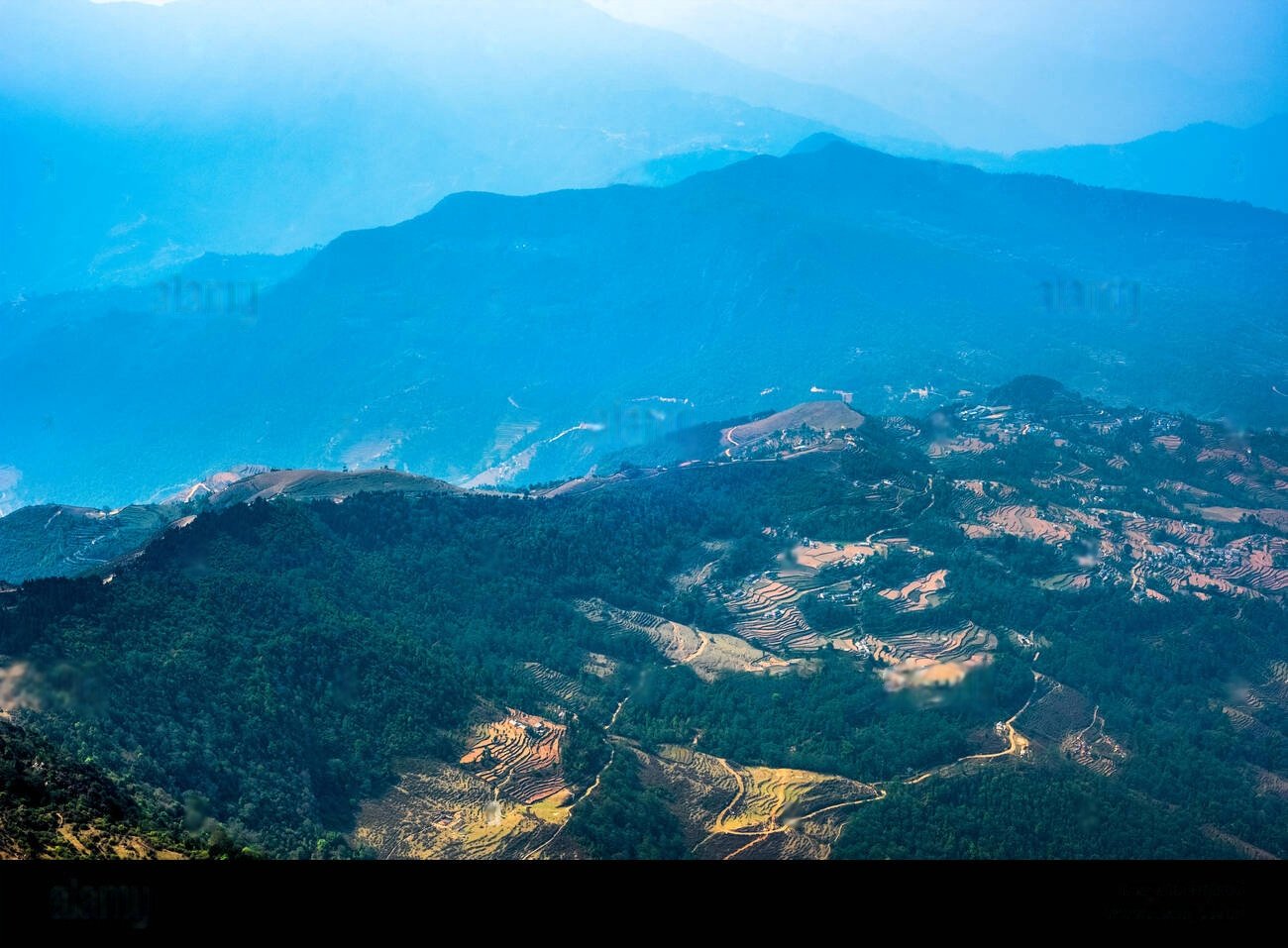
From $0
Price Varies from Group Size
Success
Here goes about why the success toast occurred.
 Itinerary
Itinerary
Arrival in Kathmandu (1,400m)
Your Panchase adventure begins in Nepal's vibrant capital. After airport pickup, settle into your hotel and attend a pre-trek briefing with your guide, who will outline the journey ahead through the beautiful middle hills west of Pokhara. Take time to explore Kathmandu's cultural heritage sites and gather any last-minute supplies. The evening provides an opportunity to enjoy authentic Nepali cuisine and prepare mentally for the trek ahead. Accommodation: Comfortable hotel in Kathmandu with modern amenities.
Kathmandu to Pokhara (820m)
After breakfast, depart for Pokhara by tourist bus, a scenic 6-7 hour journey through the middle hills of Nepal, following river valleys and passing through traditional villages. Alternatively, take a short 25-minute flight for magnificent aerial views of the Himalayan foothills. Upon arrival in Pokhara, enjoy the relaxed atmosphere of this lakeside city with optional boating on Phewa Lake or visits to local temples. Use the opportunity to glimpse the Annapurna range, including the distinctive peak of Machapuchare (Fishtail Mountain) that will be visible during your trek. Accommodation: Tourist-class hotel in Pokhara.
Pokhara to Bumdi (1,520m)
After breakfast, take a short 30-minute drive to the starting point of your trek at Kande or Phedi, depending on your selected route variation. Begin trekking through terraced farmland and scattered rural homesteads, gradually climbing through changing vegetation zones. The 4-5 hour journey offers increasingly beautiful views of the Annapurna range, particularly Annapurna South and Machapuchare, with the landscape becoming more dramatic as you gain altitude. Reach the village of Bumdi by mid-afternoon, a charming settlement with traditional stone houses and a predominantly Gurung population. The village offers excellent sunset views over Phewa Lake and the mountains beyond. Accommodation: Basic teahouse or homestay in Bumdi.
Bumdi to Panchase Bhanjyang (2,065m)
Continue ascending through beautiful forest for 4-5 hours, with the ecosystem transitioning from mixed woodland to rhododendron forest. The trail passes through small, authentic farming communities where you'll observe traditional daily activities and agricultural practices largely unchanged for generations. Wildlife viewing opportunities increase as you enter more pristine forest, with numerous bird species and possibly even glimpses of barking deer or langur monkeys. Reach Panchase Bhanjyang, a small settlement at a mountain pass that serves as the final village before the ascent to Panchase Peak. Enjoy dramatic mountain views and the peaceful atmosphere of this remote location. Accommodation: Basic teahouse or homestay in Panchase Bhanjyang.
Panchase Bhanjyang to Panchase Hill (2,500m) to Bhadaure (1,670m)
Rise early for a pre-dawn 1-2 hour hike to Panchase Hill for sunrise. The summit area features a temple dedicated to Lord Shiva and offers spectacular 360-degree views encompassing the Annapurna range, Dhaulagiri, Manaslu, and Lamjung Himal, with Phewa Lake visible far below. After enjoying the panorama and visiting the temple, descend to Panchase Bhanjyang for breakfast. Continue your journey, descending through different forest zones for 3-4 hours to reach Bhadaure, a picturesque village with predominantly Brahmin and Magar households. The community offers insights into a different aspect of rural Nepali culture than the Gurung villages visited earlier. Accommodation: Basic teahouse or homestay in Bhadaure.
Bhadaure to Pokhara
Complete your trek with a 3-4 hour descent through changing landscapes, passing through the settlement of Pumdi Bhumdi before reaching Phewa Lake. The final portion of the trail offers beautiful views of the lake and surrounding hills, with the Annapurna range visible on clear days. At the trail's end, take a short boat ride across Phewa Lake, providing a scenic conclusion to your trekking adventure, or a jeep can be arranged for direct return to Pokhara. Celebrate the completion of your trek with a relaxing evening in Pokhara, perhaps enjoying a meal at one of the lakeside restaurants with views of the mountains you've just explored. Accommodation: Tourist-class hotel in Pokhara.
Pokhara
Take a well-deserved rest day in Pokhara. Options include additional boating on Phewa Lake, visiting the World Peace Pagoda for panoramic views, exploring the International Mountain Museum, or simply relaxing in lakeside cafes and restaurants. This day allows time to reflect on your journey through one of Nepal's most beautiful and accessible trekking regions. Accommodation: Same hotel in Pokhara.
Pokhara to Kathmandu
Return to Kathmandu by tourist bus (6-7 hours) or a short flight (25 minutes). The afternoon in Kathmandu offers opportunities for souvenir shopping in Thamel or additional sightseeing. A farewell dinner provides a chance to celebrate your Panchase adventure with guides and fellow trekkers. Accommodation: Comfortable hotel in Kathmandu.
Departure from Kathmandu
Your Panchase adventure concludes with a transfer to Kathmandu International Airport for your departure flight. Depending on your schedule, you might have time for last-minute shopping or sightseeing in Kathmandu before leaving Nepal with memories of your journey through the beautiful middle hills outside Pokhara.
 Services
Services
Includes
- Specialized bilingual guide familiar with the Panchase region
- Private Transport where applicable
- Tourist bus/flight between Kathmandu and Pokhara
- Daily meals on the trek: breakfast, lunch, and dinner
- Services of an experienced guide and porter during the trek
- All essential trekking permits
- Accommodation throughout the trek (teahouses or homestays)
Excludes
- Additional accommodation due to personal preference or early completion
- Comprehensive travel and medical insurance for the trek
- Gratuities for the guides, porters, and trekking support staff
- International flights and entry visa fees for Nepal
- Personal trekking equipment and gear (sleeping bags, jackets, etc.)
- Extra food and drinks beyond the standard meals provided
- Activities in Pokhara (boating, paragliding, etc.)
 Good to Know
Good to Know
This trek is suitable for almost any reasonably fit person, including families with children over 7-8 years old. Basic trail-appropriate footwear is essential, but full heavy-duty trekking boots are unnecessary; sturdy hiking shoes are sufficient. Accommodations are simple but comfortable, typically offering basic rooms with twin beds and shared bathroom facilities. Pack for mild temperature variations; while days are generally pleasant, early mornings and evenings can be cool, particularly at higher elevations. The trek can be extended or shortened based on preference and fitness level. Bringing small gifts for children in villages (school supplies rather than candy) is appreciated but not expected. Villagers appreciate basic attempts at Nepali phrases, even simple greetings. Purified water is not widely available; bring water purification tablets or a filtration system to reduce plastic waste from bottled water. Mobile phone coverage is surprisingly good throughout most of the trek but can be spotty in some areas.
Wildlife Encounters
While trekking, keep an eye out for:
Over 100 species of orchids (seasonal), Numerous medicinal plants, Himalayan langur monkeys in forested sections, Barking deer and occasional muntjac, Various bird species including: Danphe (Nepal's national bird), Various colorful sunbirds, Himalayan vultures soaring above ridges, Kalij pheasants, Numerous forest birds, Numerous butterfly species, particularly during spring, Small mammals like red pandas (extremely rare sightings), Wild boar (occasional sightings at dawn or dusk)
 Reviews
Reviews
 FAQs (Frequently Asked Questions)
FAQs (Frequently Asked Questions)
Your queries are answered.
What makes Panchase special compared to other short treks near Pokhara?
Unlike the more famous Ghorepani/Poon Hill Trek, Panchase receives significantly fewer visitors, creating a more authentic experience away from trekking crowds. The area boasts exceptional biodiversity with conservation status due to its unique flora, particularly orchids and medicinal plants. Culturally, villages on the route remain focused primarily on traditional agriculture rather than tourism, resulting in more genuine cultural experiences. The trek also offers a rare 360-degree panorama that includes views of Phewa Lake alongside major Himalayan peaks, creating a unique perspective not found on many other treks.
When is the best time to do the Panchase Trek?
The Panchase Trek is viable year-round due to its moderate elevation, but certain seasons offer particular advantages. October to November provides the clearest mountain views and stable weather. March to May features spectacular rhododendron blooms and numerous wildflowers. Even during the monsoon season (June-September), the trek remains possible, with lush green landscapes and fewer visitors, though occasional rain showers and hazier views should be expected. Winter (December-February) brings cooler temperatures but often clear skies and excellent mountain views.
Do I need a guide or porter for this trek?
While the Panchase Trek can be done independently as the trail is generally clear and villages are regularly spaced, a guide enhances the experience through cultural interpretation, identification of plant species, and insights into local traditions. Porters make the journey more comfortable by carrying the bulk of your gear, allowing you to focus on enjoying the scenery and cultural experiences. Both guides and porters contribute to the local economy and employment. For first-time trekkers, families, or those interested in deeper cultural understanding, a guide is recommended but not strictly necessary.
What permits do I need for the Panchase Trek?
The Panchase Trek requires only the TIMS (Trekkers' Information Management System) card (approximately $10). Unlike treks in conservation areas like Annapurna or Langtang, no additional conservation permits are required. The TIMS card can be arranged through your trekking agency or obtained in Kathmandu at the Nepal Tourism Board office or in Pokhara.
What type of accommodation can I expect?
The Panchase Trek features basic teahouses or homestays throughout the route. Accommodations typically offer simple twin rooms with shared bathrooms and common dining areas. Hot showers are rarely available. The experience is rustic but comfortable, providing authentic insights into rural Nepali life. Bedding is provided but a sleeping bag liner improves comfort and hygiene. Electricity is available in most villages but may be limited to certain hours.
How should I prepare physically for this trek?
The Panchase Trek requires only basic fitness levels, making it accessible to most healthy individuals. Regular walking for 30-60 minutes several times a week in the months before your trek provides sufficient preparation. Including some hill walking helps condition muscles for the inclines you'll encounter. This trek is suitable for beginners with reasonable fitness or even those with limited trekking experience.
Can this trek be extended or shortened?
Yes, the Panchase Trek is highly flexible and can be adapted to different timeframes and fitness levels. It can be completed in as little as 2-3 days of actual trekking for those with limited time or extended to 5-6 days by including additional villages or taking a more circuitous route. Some trekkers combine it with other activities in the Pokhara area for a more comprehensive experience. Your trekking agency can customize the itinerary based on your specific interests and available time.
What is the food like on the Panchase Trek?
Teahouses serve simple but nutritious meals, with dal bhat (rice with lentil soup and vegetables) being the staple. Other common options include noodle soups, fried rice, chapati (flatbread), and potato dishes. Menu variety is more limited than in popular trekking areas but sufficient for the short duration of this trek. Bringing favorite snacks to supplement meals is advisable. Most accommodations serve food prepared from locally grown organic produce, offering a fresh and authentic taste of rural Nepali cuisine.
How reliable is the WiFi and phone connectivity?
Most villages on the Panchase Trek have basic cell phone coverage, though it may be intermittent in some areas. Local SIM cards with data plans work reasonably well throughout much of the route. WiFi is rarely available in teahouses. The proximity to Pokhara means connectivity is generally better than on more remote treks, but still plan for potential periods without connection and inform family or friends of your itinerary in advance.
How much extra money should I budget beyond the package cost?
Beyond the package cost, budget approximately $8-12 per day for additional expenses. These might include bottled water if not using purification methods, extra snacks, hot drinks beyond those included with meals, and any emergency supplies you might need to purchase along the route. Prices are generally reasonable as the route is accessible and doesn't involve high-altitude premium pricing. Consider carrying additional funds for optional activities in Pokhara before or after your trek.
Is the Panchase Trek suitable for families with children?
Yes, the Panchase Trek is one of Nepal's most family-friendly trekking options, appropriate for children approximately 7-8 years and older, depending on the child's stamina and hiking experience. The relatively short daily distances, modest altitude gain, and regular village spacing make it manageable for families. Children particularly enjoy the cultural interactions in villages, potential wildlife sightings, and the achievement of reaching Panchase peak. Some families choose to add an extra day to the standard itinerary to allow for a more relaxed pace with children.
What is the religious significance of Panchase?
Panchase holds importance for both Hindu and Buddhist traditions, representing the religious harmony characteristic of Nepal. The summit area features a temple dedicated to Lord Shiva that attracts Hindu pilgrims, particularly during specific festival periods. Buddhist prayer flags and smaller shrines are also present throughout the area. The name "Panchase" derives from "Panch-aassi" meaning eighty-five, referring to the eighty-five varieties of grass believed to grow in the area. Local traditions include various rituals associated with the changing seasons and agricultural cycle, which visitors might encounter depending on their timing.




